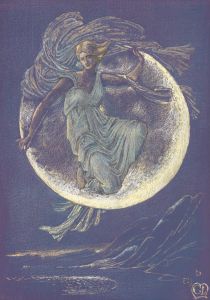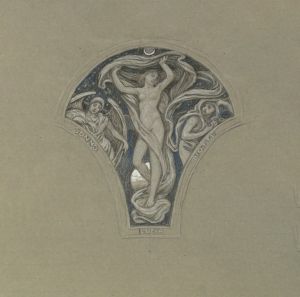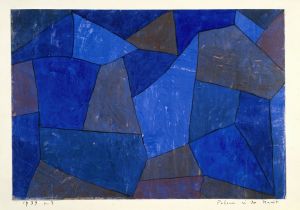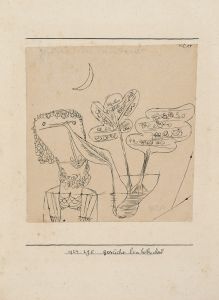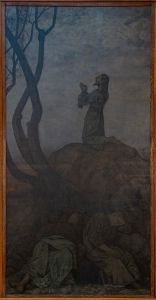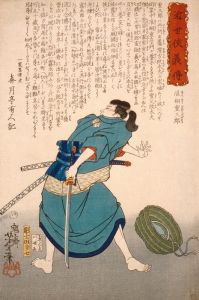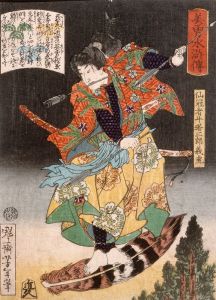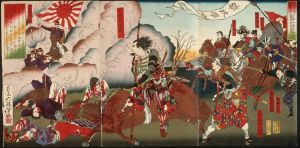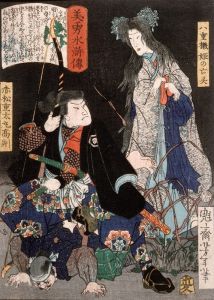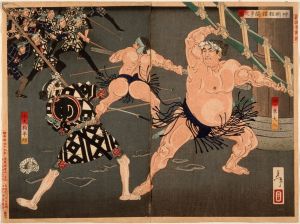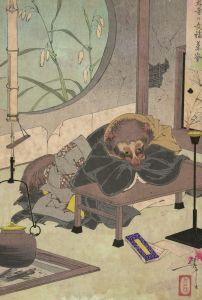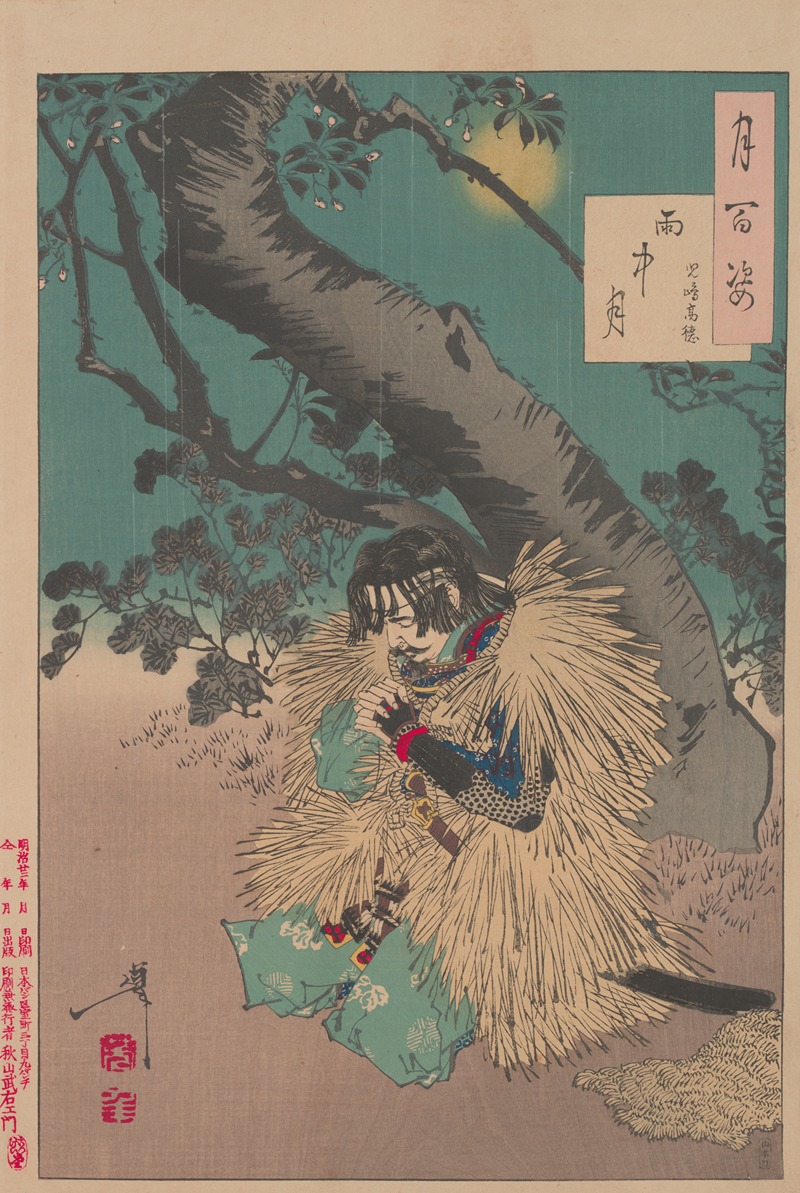
Rainy moon
A hand-painted replica of Tsukioka Yoshitoshi’s masterpiece Rainy moon, meticulously crafted by professional artists to capture the true essence of the original. Each piece is created with museum-quality canvas and rare mineral pigments, carefully painted by experienced artists with delicate brushstrokes and rich, layered colors to perfectly recreate the texture of the original artwork. Unlike machine-printed reproductions, this hand-painted version brings the painting to life, infused with the artist’s emotions and skill in every stroke. Whether for personal collection or home decoration, it instantly elevates the artistic atmosphere of any space.
"Rainy Moon" is a woodblock print by the renowned Japanese artist Tsukioka Yoshitoshi, part of his acclaimed series "One Hundred Aspects of the Moon" (Tsuki hyakushi). This series, created between 1885 and 1892, is considered one of Yoshitoshi's masterpieces and showcases his exceptional skill in the ukiyo-e tradition, a genre of Japanese art that flourished from the 17th through the 19th centuries.
Yoshitoshi was born in 1839 and became one of the last great masters of the ukiyo-e style. His work is noted for its dynamic composition, dramatic use of color, and innovative approach to traditional themes. "One Hundred Aspects of the Moon" is a collection of 100 prints that explore various themes related to the moon, drawing inspiration from Japanese and Chinese history, literature, folklore, and theater.
"Rainy Moon" is one of the prints in this series and exemplifies Yoshitoshi's ability to blend realism with the ethereal qualities of the moonlit night. The print typically features a solitary figure, often a historical or legendary character, set against a backdrop that captures the mood and atmosphere of a rainy, moonlit scene. Yoshitoshi's use of delicate lines and subtle color gradations effectively conveys the damp, reflective surfaces and the soft, diffused light of the moon, creating a sense of tranquility and introspection.
The "One Hundred Aspects of the Moon" series was produced during a period of significant change in Japan, as the country was transitioning from the Edo period to the Meiji era. This was a time when Japan was opening up to Western influences, and traditional art forms like ukiyo-e were facing challenges from new technologies and artistic styles. Despite these changes, Yoshitoshi remained committed to the ukiyo-e tradition, and his work is often seen as a bridge between the classical and modern eras of Japanese art.
Yoshitoshi's prints, including "Rainy Moon," are celebrated for their narrative depth and emotional resonance. They often depict scenes that evoke a sense of nostalgia and longing, reflecting the artist's own struggles and the broader cultural shifts of his time. His ability to capture the human experience in a single image has earned him a lasting legacy in the world of art.
Today, Yoshitoshi's works are highly regarded by collectors and scholars alike, and "Rainy Moon" continues to be appreciated for its artistic beauty and historical significance. The print, like many in the series, is a testament to Yoshitoshi's mastery of the woodblock printing technique and his deep understanding of the cultural and symbolic significance of the moon in Japanese art and literature.





